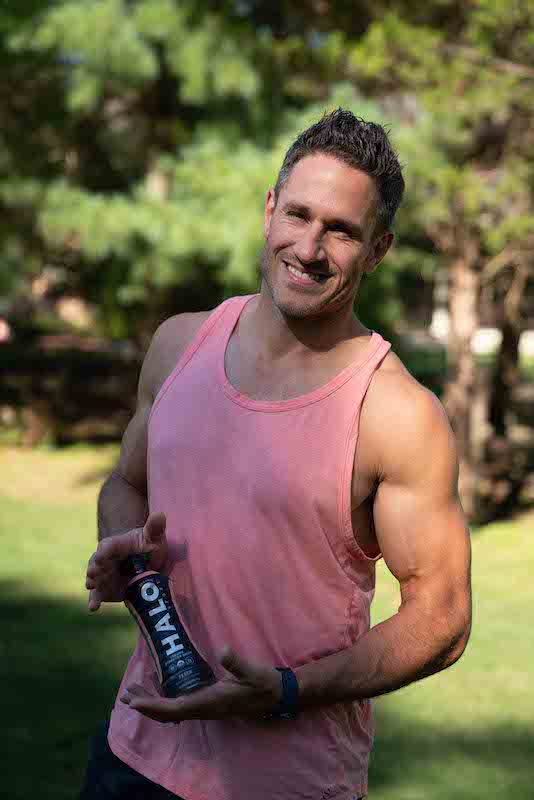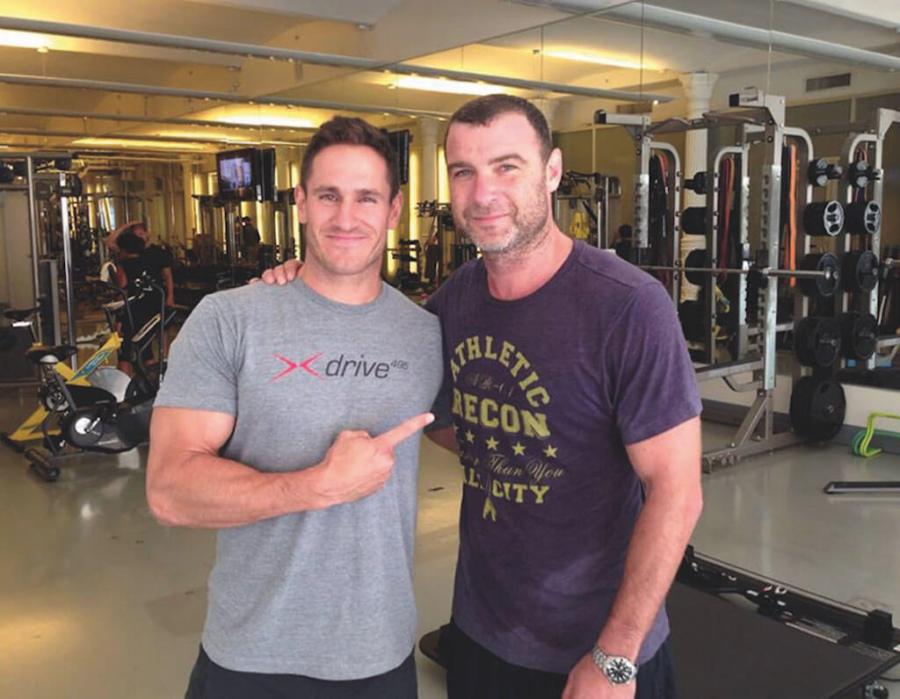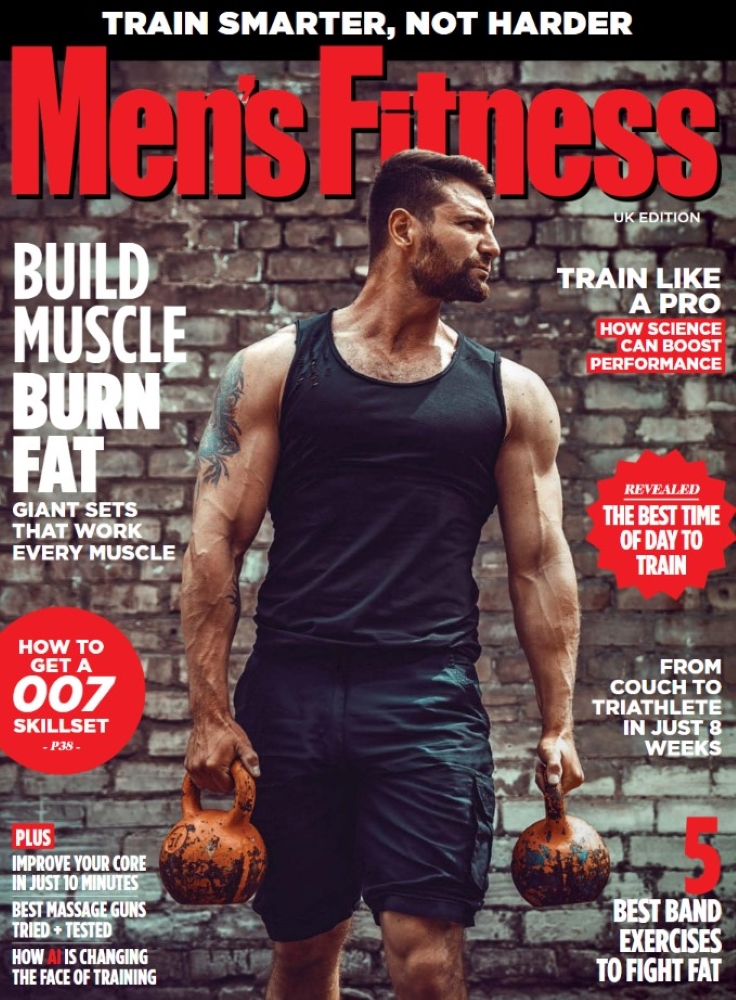Don Saladino is the PT to the stars who’s trained the likes of Ryan Reynolds, Jake Gyllenhaal and Hugh Jackman to get in superhero shape for their respective Hollywood star turns.
While it’s not quite as simple as lift, eat, sleep, repeat, Saladino’s training philosophy is refreshingly succinct, as he explains, “We want to make sure that we have the highest level of movement quality and the highest level of energy, but also to be able to take your shirt off and look like a badass.”
He believes that having a solid foundation of functional movement will pay dividends once you begin your journey to guns of steel. Working on your weaknesses and areas of inflexibility will strengthen your foundation and stop problems occurring on the ‘floors’ above.
“The idea isn’t to make the movement quality perfect,” says Saladino, “but to make it good enough to develop a level of resiliency, whether you’re doing your own stunts or just chasing your kids around the backyard.”
Get Bang for Your Buck
You might think that you need to hammer your pecs and biceps with isolation moves to get your superhero pump on, but Saladino says that by using big, compound moves that recruit as much muscle as possible, growth will come.
“Focus on getting stronger,” he says, “using good, high-quality, big-bang-for-your-buck movements. Do this, and as you’re putting on muscle, you will actually improve movement quality, too.”
He adds that the larger muscles in the legs and back should get more volume than the biceps and triceps:
“You should still train them, but I don’t think you need to be training them as frequently, because the pushing and pulling through those bigger lifts – like deadlifts and squats – will target your ‘mirror muscles’, too.
Crank Up the Calories
If there’s one thing that people get wrong when trying to pack on muscle, it’s underestimating how many calories you need to eat every day to support your training. In fact, Saladino says it’s very common to find someone who is always in a calorie deficit, and therefore not even eating enough to maintain the muscle that they do have.
“If there’s not enough protein to build muscle, if there’s not enough carbohydrates for energy, if there’s not enough fat to keep us satiated (which is also good for hormone function) and enough calories to stay satiated, then we’re always going to be in that deficit,” he says, “and it’s going to be very difficult to put on muscle.”
But if you’re undercooking it by 1,000 calories, say, rather than trying to jump by 1,000 calories immediately, which can be hard on both body and mind, Saladino gets his clients to add 150 extra every week – so that by four weeks into a programme, you’re hitting the right numbers.
View this post on Instagram
Switch Up the Rep Range
Look around any weights room and you’ll notice eight to ten reps is standard practice for most gym-goers. Saladino, though, says you need to shake things up.
“I think a big mistake for most people is that they’re always trying to train in that bodybuilding rep range the whole time,” he says. Instead, he looks to continually challenge the muscles with progressive overload, in order to get stronger over time:
“For example, I like to start with a very basic linear periodisation, spending two to three weeks at 15 reps, two to three weeks at 12 reps, two to three three weeks at eight reps, two to three weeks at six, then maybe getting down to four to five on compound movements.”
Of course, if you are dropping down the rep range to lift heavier then you will need to get someone to monitor your form and spot you – ask a gym staff member to assist. Saladino adds that learning to lift heavy will help avoid imbalances and inconsistencies in your movement, too.
Make Use of Kettlebells
Only got half an hour for a workout but there’s a queue for the squat rack? Saladino has a quick fix for that:
“If there was one piece of equipment I had to choose to be stuck on an island with, it would without a doubt be a kettlebell,” he says. “The reason being it can perform the same functions as a dumbbell, but it’s very useful in high-intensity interval training applications, too.
“I could travel with one 28kg kettlebell and do all my strength work: I could do Turkish get-ups, I could do arm bars, I could work on mobility, I could work on my cardio. I can get a complete workout in – and it’s very rare you can say that about any one piece of equipment.”
Commit But Be Flexible
It’s common for people to either not stick with a programme, or try to follow it so rigidly that they doom themselves to not shaping up. To avoid these two extremes, Saladino recommends committing to the plan, while remaining flexible.
“Commit to that training programme for a period of time,” he says, “and assess it after a few months. Because if you make five changes in the next two weeks, you’re not going to know what ended up working.”
He also recommends starting with a realistic number of days of training: three days a week might be better than five if it means you train consistently – and don’t beat yourself up if you miss a day:
“I think people should stop with this mindset of perfection. For example, if on Monday you’re not doing chest and it’s Tuesday now, just push everything back – that’s fine!”
View this post on Instagram
Carry Heavy Stuff
There’s one super-effective move Saladino is amazed everyone isn’t doing.
“Any type of carry is magic,” he says. “It’s one of the most beneficial movements to the human body, because it’s essentially a moving plank. You are focusing on creating as much tension in the body as possible while moving, and it’s a great weapon to get someone really strong.”
It doesn’t even matter what type: single rack carry, double rack carry, double overhead, single overhead, farmer’s walks or suitcase carry – they all work.
Get Dynamic
Saladino says he sees lots of people stretching all the time, because they feel tight, but the problem is often down to stability rather than just flexibility.
“Mobility is the combination of flexibility and stability,” he says. “If we clean up the stability, flexibility becomes functional.”
And a great way to improve stability is with dynamic movements.
“I’d start at least two workouts a week with something I like to call a jump, a throw and a carry,” says Saladino. The jump could be a vertical jump, a broad jump, a one-legged hop, a matrix jump, a gap jump for height, or a depth jump for distance. Then the throw could be a medicine ball throw with variations such as side throws, overhead throws or ground slams.
“Keep it simple with a jump, throw and a carry for three rounds, and just enough weight to work at 80 per cent,” he adds. “That allows your body to move, and really primes the nervous system for your strength or power work. It’s a great way to get people feeling more athletic, stronger and more mobile.”
Jumps, throws and carries will keep your training multi-directional, so that you can back up those muscle gains with some superhero athleticism.

Don Saladino is an ambassador for HALO Hydration which is now available in the UK at halohydration.com
Words: Matt Ray








